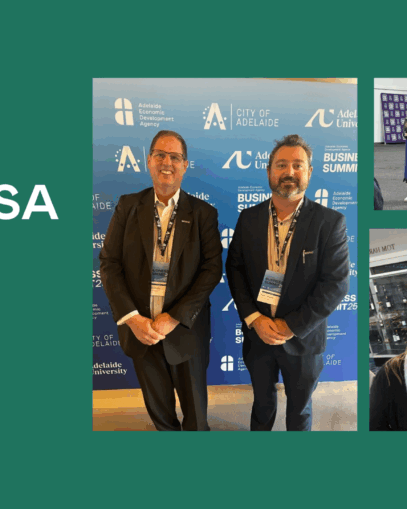How to unleash your senior executive superpower with a benefits-driven approach

As it’s been said, with great power comes great responsibility. However, knowing where exactly the responsibility of a senior executive lies can help you maximise your power throughout the project lifecycle. This article explores how and when to harness this superpower to achieve not only project delivery but also project success from start to finish.
As the senior executive responsible for introducing a change, you likely see your project delivering a critical “thing” needed by your organisation, such as an enhanced IT system, a new building or new equipment. You expect to oversee a plan for the project activities required to achieve that item, a schedule for when it will be finished, and identification of the resources needed to create your “thing”.
But a single-minded focus on delivering that item is not the most effective application of your senior executive expertise. Trust your project manager to deliver within the planned budget and timeframe; delegate day-to-day project management, and they will alert you should success be threatened. Your superpower contribution to project achievement is to focus on the benefits your organisation seeks from having that “thing”. This means taking a benefits-driven approach to reviewing project performance and making decisions.
The popular project management method PRINCE2 defines a benefit as “the measurable improvement resulting from an outcome perceived as an advantage by one or more stakeholders”. Benefits are the gains or operational effects stakeholders expect to achieve when the project delivers its intended results. Examples of project benefits include reducing annual IT operating costs by 10%, doubling the customer satisfaction rate, or increasing aircraft range by 600 km.
The senior executive is best placed to ensure benefits are considered at the beginning of the project and remain at the front of decision-making throughout the project lifecycle. You were assigned the benefits-driven superpower due to your position of authority in the organisation:
- You are an expert on the organisation’s values, needs, capabilities and resources, enabling you to judge how the project remains desirable, viable and achievable.
- You have the networks and senior stakeholder relationships, including with those who will ultimately use the products provided by the project.
- You are empowered to make the big decisions and choose courses of action, including starting, finishing, and changing the project, and committing project resources.
You hold a vital organisational position with the visibility required to continually assess that the project is tracking against the intended benefits. You have the power to make the changes to ensure that the benefits sought from delivering the item are achieved.
Your superpower can be used throughout the project lifecycle:
- Project start-up: Your superpower will first be visible when you identify the expected benefits for the project, show how they will be realised and confirm they align with your organisation’s objectives. The reasons for undertaking the project and its expected benefits, risks, and costs will be argued in a business case. This will be the foundation for decision-making throughout the project, crucial for approving the project and ensuring clear stakeholder expectations regarding benefits. Include a prominent benefits management approach in the project management plan, detailing how benefits will be identified, measured and tracked throughout the project lifecycle.
- Project underway: Here you use your superpower to continuously assess that the project is still viable and can deliver the expected benefits. Engage your network to become active project stakeholders, checking that the project remains aligned with their needs and challenging their preparations to use the project items as early as possible to harvest the benefits. Identify, assess and mitigate risks to benefit realisation. Solutions to resource allocation problems or selecting a challenging course of action become clearer when decisions are framed to maximise the benefits delivered to the organisation.
- Project closure and product handover: Preparing for project completion, your superpower helps evaluate whether the anticipated benefits have been realised and stakeholders are satisfied. Some benefits cannot be measured until the product has been used in an operational environment. The senior executive is well-placed post-project to encourage stakeholders to use the “thing” to achieve the advantages sought in the business case.
Senior executives best serve their projects by keeping benefits at the centre of their decision-making processes, not by enforcing the delivery of a specific asset. The thing about superpowers is that they remain hidden until they are put into action. Exercise your senior executive superpower today by taking a benefits-driven approach to reviewing project performance and making decisions that maximise your organisation’s gains when the project’s products are used.


